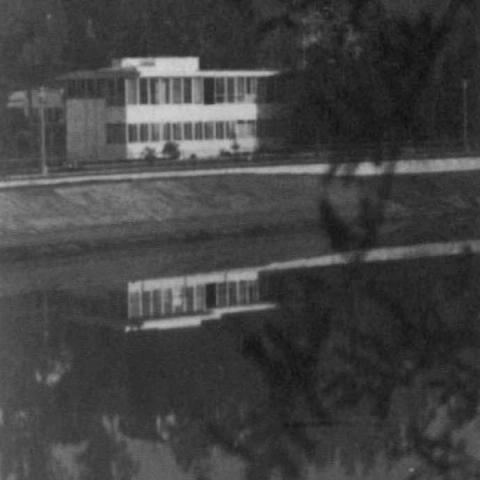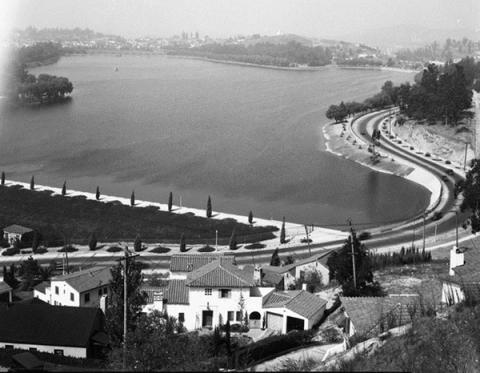After completing the Lovell Health House (1929) Neutra went on to Europe where he was welcomed as one of the leaders of the Modernist movement. He travelled to Brussels to represent the U.S. at a meeting of the recently organized Congress International d’Architecture Moderne (C.I.A.M.), and he was invited to lecture in Switzerland, the Netherlands, and Germany (where he spent six weeks as a guest at the Bauhaus school.) Neutra and his family were settling back in Zürich when Neutra received a wire from C.H. van der Leeuw, a man then unknown to him, asking to meet him in Basel.
Mr. Van der Leeuw turned out to be a millionaire industrialist and owner of the Van Nelle tobacco and tea interests. After an initial meeting, Richard and Dione agreed to visit Van der Leeuw in Rotterdam. They arrived at the most modern house Neutra had ever seen. It was an assembly of technical novelties: English sheet rubber covered the floors, there was intercom in all the rooms, complicated electrical switches activated the lights, window drapes, and water in the bathrooms: design elements which Neutra would later use in his own houses. Mr. Van der Leeuw also arranged for Neutra to spend a night in Gerrit Rietveld’s De Stijl style Schröder House in Utrecht. The visit to Holland would prove to be incredibly important for Neutra: the relationship to Mr. Van der Leeuw became the catalyst for Neutra’s own house in Los Angeles and the De Stijl movement left a lasting mark on Neutra’s work.
A year after the start of his global tour Neutra returned to Los Angeles. He and his family moved into a bungalow in Echo Park, a Los Angeles neighborhood adjacent to Silver Lake. A month after their homecoming, Mr. Van der Leeuw traveled from Europe to visit Neutra. Together they set off on a tour of modern buildings around Los Angeles that included the Jardinette Apartments and Lovell Health House.
When Mr. Van der Leeuw asked to see Neutra’s own home, Neutra had to explain that he was in fact renting. At the end of the day as Neutra was dropping him off at his hotel, Van der Leeuw asked Neutra: “Why don’t you build a house for yourself?” Taken aback Neutra replied: “Oh –errrrr- I have not the funds to do such a thing.” Van der Leeuw then pulled out his checkbook and asked: “how much do you need?” Neutra initially declined the offer, but eventually accepted his offer in the form of a low-interest loan of a ridiculously small amount $3,000. (Neutra, Life and Shape, 265) Neutra was able to borrow an additional $5,000 dollars to complete the sum required to build the VDL Research House, which he named after his Dutch benefactor.
For a year Neutra wondered what to do about the design of his house, wanting to make it a full-fledged formal and material research project. His objective was to create a project that housed with land economy, that addressed health and human comfort, and that offered rich and varied experiences (Neutra, Life and Shape, 267.) He purchased a small 4,350sqf plot across from the Silver Lake Reservoir and set about planning a building for his family and architectural practice. Once construction started passersby marveled at the crisp white box with ribbon windows being erected on Silver Lake Boulevard.


